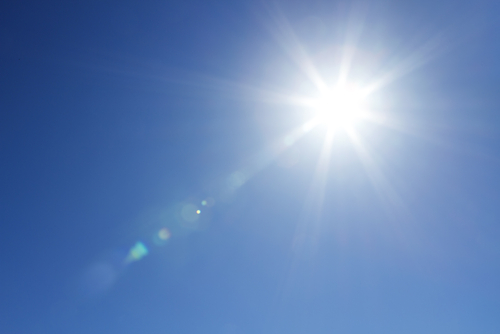A mesmerising, exotic city steeped in history, rich in culture and vibrant with life awaits you – and the best thing is, it’s only a 4-hour flight away. Jack Pitts delves into the many wonderful delights of Marrakesh in Morocco
Mendicant musician playing the guimbri © Ahron de Leeuw
October sun in exotic Marrakesh
October is the perfect month to visit Marrakesh for some late summer warmth, with average temperatures around 21C and up to 7.6 hours of daily sunshine.
It’s almost impossible to believe that Marrakesh, the “Red City”, is only four hours away from London. You’ll find culture and excitement that cannot be found in other parts of Europe, and it’s all avalable in less time than most people spend on the tube every day.
Street performers tumble through the air, charmers coax snakes out of clay pots and men with moustaches as thick as broom heads push carts piled with potions; in the background you hear the impassioned wail of the muezzin – here, is something truly different.
Marrakesh has been captivating British visitors for centuries. During the 60s, the Rolling Stones were among some of the city’s more notorious visitors when it became a beacon for hippies looking for sunshine and culture. And arguably the most famous Brit of all, Winston Churchill, fell in love with the city early in life, loudly singing its praises and spending much of his time there in later life.
Like nowhere else
Driving from the airport you might be struck by how similar the city is to any other. Here and there kids are playing, metal shutters cover shop doors, and billboards advertise well-known goods. But that changes as you step out of the car into the old city, when the real Marrakesh rushes up to meet to you in a foray of car horns and mingled music.
Marrakesh has housed three royal dynasties and has been a trading crossroads for Africa, the Middle East and Europe for thousands of years. This explosion of cultures can be most clearly felt among the labyrinth of souqs (shops and stalls) that make up the bustling centre. Here, vibrant sights, smells and colours combine to make an unmissable shopping experience – remember to haggle!
Once you’ve pulled yourself away from the markets, try the food (Marrakesh was once a crossroads of the spice trade), head to a local hammam (bathouse), take a tour of a tanning factory, or simply lose yourself in the endless, interwoven backstreets.
When to go
Although Marrakesh is a year round destination, spring and autumn are the best times to visit. In the few months before and after the high season, Marrakesh begins to simmer slightly. Temperature drops from the mid-30s to the more bearable mid-20s, and the number of tourists decreases too, resulting in a much more relaxing stay. At this time of year the maze of shops and cafes that defines the city is a lot less stifling, too.
The Bahia Palace is a palace and a set of gardens in Marrakech. They were built in the late 19th century, and as with other buildings of the period in other countries, it was intended to capture the essence of the Islamic and Moroccan style © Jorge Láscar
What to do
Marrakesh is a shopper’s heaven, so leave some bag space and expect to come back with at least a few trinkets to remind your of your trip. When you’ve filled your rucksack, there’s still plenty more to do.
Head to Djemaa el-Fna, the famous square that acts as an open-air theatre, here talented buskers perform from morning to, well, morning.
Be humbled at the Ali Ben Youseff Madrasa, a college for teaching Islam built in the 16th century. Like much Muslim architecture at the time, it is simultaneously spectacular and understated. The 19th century Bahia Palace is also well worth a visit.
Tanning hides and wool spinning are two of the cities great trades and tours can be made across the city, often whether you want them or not.
The Atlas Mountains is a mountain range across the northwestern stretch of Africa extending about 2,500 km through Algeria, Morocco and Tunisia
© Tola A.
If you have more time, take a day trip to the Atlas Mountains. In winter, parts of the range can be skied on but at this time of year it is a lovely place to relax away from the bustle of the city with sweet minty tea and spectacular views.
Where to dine
Marrakesh is inundated with places to eat and often at very healthy prices. Eat with the locals at stalls on the Djemaa el-Fna Bisarra, or find more refined establishments in the capillaries that surround it. Apart from the ubiquitous tagines, white bean soup is also a popular local dish, which the Berbers’ revere for its restorative qualities. Try Pepe Nero for delicious traditional cuisine and fantastic service.
If you’re a foodie, you’ll be happy – there are a number of great cooking schools dotted around the city. Using hundreds of years of accumulated knowledge the schools’ teachers will teach you all about Moroccan cooking, where to source the best ingredients, which spices blend well and how to create distinctive North African flavours.
Where to stay
Staying in Marrakesh is all about personal preference. Many like to stay within the old city in a Riad, a traditional Morococan dwelling with an interior garden. Riads are cool in the heat and block out the hubbub of the city with thick walls and charming décor. However, being inside the old city means that space is at a premium and these places can often be small and expensive.
Step out of the walls and the same money will get you an extra bit of glamour, as well as the trappings that space affords such as a very welcome swimming pool. Click here for a myriad of accommodation choices.










